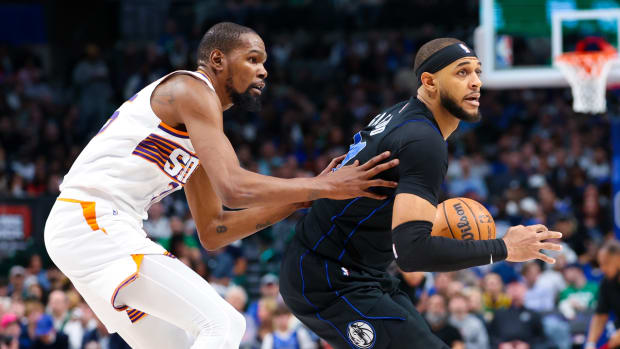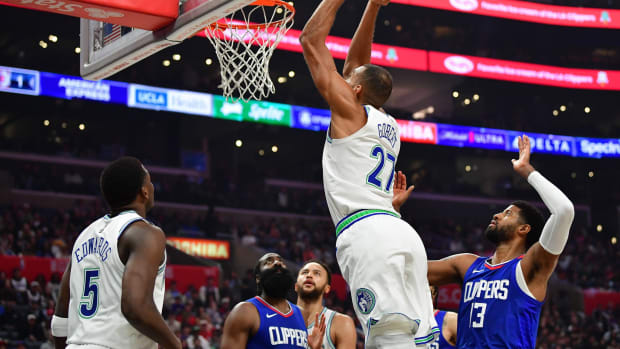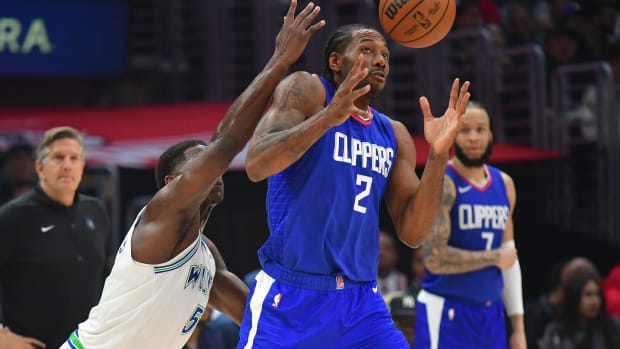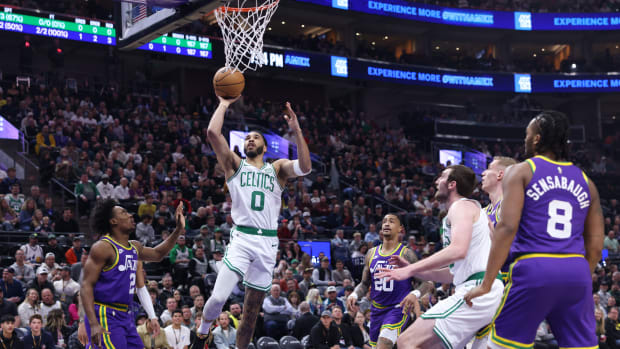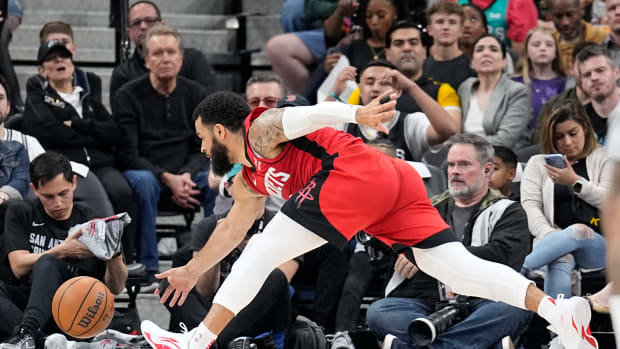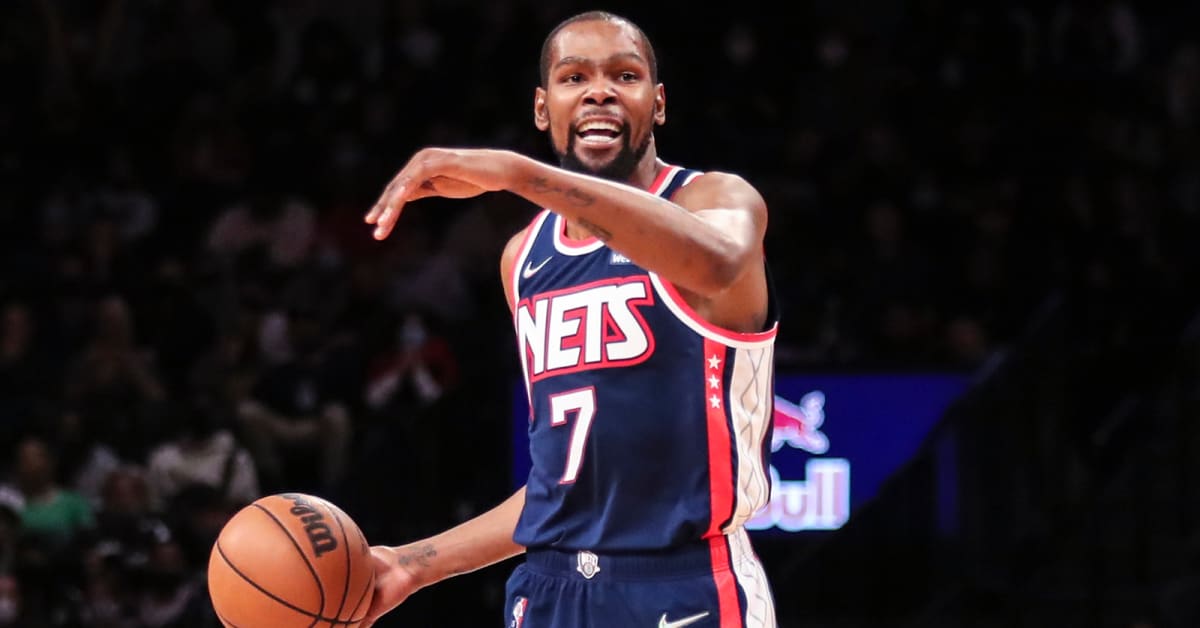
Five X-Factors That Could Decide the East
Depending on who you ask, somewhere between four and seven teams are built to win the Eastern Conference. Each is formidable in their own way, in a bracket that’s prime to yield the unexpected. And every realistic contender—from the Bucks to the Sixers to the Heat—has a serious question mark or two (or, if you’re the Nets, many more than that).
As we sprint down the stretch, here are five variables that could wind up deciding which team in the East will ultimately survive.
The Brooklyn Nets
We’ll begin with a team that defines what this article is all about: the unknown. From New York City’s vaccine mandate, to Ben Simmons’s sore back, to Kevin Durant coming back and looking like Kevin Durant for four straight months, to Joe Harris’s inauspicious ankle rehab, the Nets are a question mark with championship expectations and the potential for cataclysmic disappointment.
If everything falls right, nobody is touching this roster in a seven-game series. They’re too talented, too deep, with arguably the most potent fleet of three-point shooters on one team in NBA history. (Seriously: Seth Curry, Durant, Harris, Irving, Patty Mills…yikes.) It’s wonderful, advantageous and a truly jarring divergence from the confined lineups that helped usher James Harden out the door. (Brooklyn ranks 24th in location effective field goal percentage.)
On paper, the upshot of healthy shooters and the space they provide will not only make life easier for Irving and Durant, but also Simmons, Nic Claxton, Andre Drummond, Bruce Brown and a hungry Goran Dragic. In real life, there are just…so many questions. The Nets won’t have a long runway to develop chemistry and integrate all their new pieces, and for all we know could find themselves in a play-in game against the Raptors, in Toronto, where Irving can’t participate. Everything is fluid with this team, but their ceiling is head and shoulders above everybody else while they currently sit in eighth place. Wild times.
So, Brook Lopez?
In three years with Lopez as Milwaukee’s starting center, opponents have shot only 57.4%, 54.1% and 58.7%, respectively, at the rim when he’s on the court. These are terrific, near-best-in-the-league type of numbers. His deep drops catalyzed the Bucks and helped shape an identity that eventually yielded a championship.
But with his 34th birthday in a month, Lopez has played in only one game this season. Related: the Bucks are allowing opponents to shoot 64.9% at the basket, around league average and a stark departure from what’s been foundational to their success.
There’s no timeline for Lopez’s return from back surgery, and Milwaukee’s decision to essentially trade Donte DiVincenzo for Serge Ibaka (a “guard/wing for big” deal that teams are less and less willing to complete) doesn’t instill the most confidence in him coming back as the dependable rotation player he’s been.
This doesn’t mean the Bucks are hopeless. They’ve evolved without Lopez, switching ball screens way more than they did two years ago. But after finishing with the best defense in last year’s playoffs, they currently rank 13th. (The Bucks had the ninth-best defense during the 2020-21 regular season.)
They can probably still win a championship, but their margin for error in doing it with Lopez last year—against opponents that lost James Harden, Kyrie Irving and Trae Young—will be even thinner this time if he can’t play. (Also: Pat Connaughton’s fractured fourth metacarpal in his shooting hand, plus PJ Tucker now inflicting pain on behalf of a conference rival, are other reasons to be concerned.)
Jayson Tatum’s Shot Distribution
Forget about his disappointing three-point percentage or stagnant assist rate. Shot selection—the in-game feel for when it’s right to dance in the mid-range, attack the cup or get off the ball, relocate and get it back for an easier look—has been the most concerning hiccup on Jayson Tatum’s resume.
In the opening two months of the season, there were 53 players who pulled up three or more times per game inside the arc. Tatum was the fifth-least accurate among them. They accounted for about one out of every five shots he took, which was similar to the previous two seasons.
As the season’s gone on, though, Tatum has started to streamline his attack. In November, 22.1% of his shots were from the mid-range. That dropped to 18.4% in December. In January, it was 15.6%. And with February fresh in the rearview mirror, Tatum’s mid-range frequency fell once again, all the way down to 12.1%.
It’s not that he needs to eliminate long twos entirely—Tatum’s ability to get these shots off will be critical in the playoffs—but when he lives in the midrange, too many Celtics possessions end with a contested, unnecessary, off-balance attempt that feel like he’s forcing the issue and settling for less at the same time. It’s not a coincidence that as his mid-range frequency drops, Boston’s assist rate rises along with Tatum’s true shooting percentage.
For a player with all the physical tools, finesse, technical skill and power to one day execute pretty much whatever his brain wants, Tatum’s migration toward Moreyball is an encouraging slow burn for a team that’s elbowing its way toward realistic title aspirations. He’s a 23-year-old three-time All-Star who ranks sixth in Real Plus-Minus, averaging as many points as Steph Curry with a higher usage than LeBron James or Nikola Jokić. The Celtics’ offensive rating goes from seventh best with Tatum to 29th when he sits.
If his shot selection continues to trend in the right direction—while, of course, he makes them at a rate he’s proven he can—the Celtics will have the efficient superstar they need to win it all.
Philadelphia’s Supporting Cast
The James Harden-Joel Embiid era is off to an absurdly productive start. When they share the floor, Philadelphia’s offensive rating is 134.5. We’re talking about a two-game sample size, sure. But also: there are 1,152 two-player combinations that have played at least 250 minutes together this season. The highest offensive rating among them is 122.3, held by Donovan Mitchell and Hassan Whiteside. Harden and Embiid already have ridiculous pick-and-roll synergy (especially when the corner is empty). And out of simple actions that Steve Nash (and Mike D’Antoni before him) put Harden in when he was with the Nets, where he slingshots off a screen into a dribble handoff with Embiid in the middle of the floor, the Sixers already have one of the most lethal two-man games in basketball.
Superstars are necessary to win a championship, of course. But a complementary supporting cast can be the difference. Philadelphia’s is flawed but fascinating. On Sunday, the Knicks packed the paint with every help defender they could for most Harden-Embiid pick-and-rolls. They didn’t care about Matisse Thybulle, Tyrese Maxey, Danny Green or Tobias Harris. How those four thrive off all the attention Philly’s two superstars attract could ultimately decide if they’ll win a title or not.
Harris has no obvious role on the surface beyond a spot-up threat and someone who can punish the occasional mismatch; it’ll likely take him some time to discover new spots in an offense that won’t go out of its way to give him the ball. Maxey is fearless, pushing the pace with a live dribble or driving a closeout and getting to his floater. The side-step three he made late in the fourth quarter on Sunday sent a shudder down the spine of every Eastern Conference head coach that saw it.
Thybulle can roam the baseline and back cut into space, but in the playoffs it’ll be interesting to see how he’s utilized against defenses that hide their weakest link on him. He’s shooting 23.5% when wide open behind the arc this year, but having Thybulle set ball screens for Harden could be one way to engage his own defender into the play, in ways that let Thybulle play-make out of a 4-on-3 and not cramp the floor while standing in the corner.
Green and Georges Niang will be pressed to knock down open shots that are even more open than they were before the trade deadline. And currently moonlighting as Embiid’s backup—unless Willie Cauley-Stein can make the most of an opportunity he hasn’t officially been given yet or DeAndre Jordan is officially brought aboard—exists Paul Millsap.
All together, after Harden and Embiid, the Sixers don’t have a ton of independent shot creation. They have some shooting, in theory, but postseason threes aren’t regular season threes for one-dimensional spot-up threats. Staggering Harden and Embiid makes even more sense if Maxey is tied to Embiid. If not, the offense could get muddy. The Sixers kinda feel one player away, despite how magnificent their top two are.
Bam Adebayo’s Trajectory
Two years ago, Adebayo smashed onto the scene as a fresh, prototypical representation of what a modern NBA center can be. He table-set offensive actions, ran fastbreaks, defended five positions, rebounded everything, dunked lobs, anchored Miami’s zone and made his first All-Star team. There were flaws in Adebayo’s game, but everything about him that was raw could likely be refined in time. The possibilities were endless.
Fast forward to now and Adebayo has missed two straight All-Star games, a drought that has more to do with unfortunately timed injuries, Miami’s losing record last season and someone like Julius Randle going bananas in an outlier year than his own performance, but it’s still a slight disappointment.
But the Bam of old appears to be back and better than ever, positioning himself as the potential No. 1 reason opponents should fear a seven-game series against the Heat. In February, Adebayo averaged 22.0 points (the most in any month he ever has) with a 27.2 usage rate (the highest in any month where he’s appeared in at least 10 games); only 57.9% of his baskets were assisted (nearly 15% below what it was two years ago).
Against the Spurs last week, as he dropped a 36-point, seven-rebound, four-assist, two-steal, three-block smorgasbord of excellence, Bam was decisive and unstoppable from myriad spots, be it isolated on the left wing or coasting the length of the floor for a layup (which he did on three separate occasions).
He’s running inverted pick-and-rolls, generating looks for Duncan Robinson and Tyler Herro as a crafty dribble handoff partner, cutting, rolling and using both hands around the basket. As a scorer, he’s never looked more aggressive, sometimes even missing open teammates on the weakside when he drifts into a short roll. Sprinkled in, it’s a welcomed selfishness.
Watch NBA games online all season long with fuboTV: Start with a 7-day free trial!
On defense he’s as versatile as he is stout, able to keep just about everyone, at any position, in front of him. (Last night against the Bulls, he switched onto Coby White, then recovered back to block White’s lob to his original man, Nikola Vučević, at the rim—literally defending two players at the same time.)
If all of the above keeps up going into the postseason, with Adebayo even more comfortable and independently dynamic two months from now than he is today, Miami just may be right to consider itself the favorite.
More NBA Coverage:
• NBA Power Rankings: Lakers Are Running Out of Time
• How Miles Bridges Put Himself in Perfect Position
• NBA Draft Big Board: Ranking the Top 80 Prospects
• NBA Rookie Rankings: Post-All-Star Resolutions for Top Picks
Sports Illustrated may receive compensation for some links to products and services on this website.





































